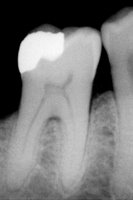IT’S SO REASSURING (NOT)
 As Patrick Sullivan, Jr. recently reported at the Pat Sullivan Blog, the FDA, after years of stonewalling, agreed to conduct hearings on the neurotoxicity from mercury-containing dental amalgams. When I read that, my first reaction was that their decision was probably already made, but I wondered if maybe I was just becoming a bit too jaded by the duck-and-cover tactics used by government regulators. Could this be a genuine attempt to determine the truth, one way or the other? Now it appears that my initial skepticism may have been well-placed.
As Patrick Sullivan, Jr. recently reported at the Pat Sullivan Blog, the FDA, after years of stonewalling, agreed to conduct hearings on the neurotoxicity from mercury-containing dental amalgams. When I read that, my first reaction was that their decision was probably already made, but I wondered if maybe I was just becoming a bit too jaded by the duck-and-cover tactics used by government regulators. Could this be a genuine attempt to determine the truth, one way or the other? Now it appears that my initial skepticism may have been well-placed.This week, the Associated Press reported that two separate studies were released that indicate amalgams are safe. Perhaps it’s just a coincidence, but what are the odds that the FDA would reverse their position on holding hearings shortly before two ⎯ not one, but two ⎯ reports are released that would tend to vindicate the agency’s long-standing position?
It’s worth noting that both studies were funded by the National Institute of Dental and Craniofacial Research, which is part of the National Institutes of Health (the same people that brought us the Institute of Medicine).
Of course, the timing of the studies and the hearings do not necessarily show a problem. What if the studies are correct, and amalgams really pose no danger? The answer to that obviously depends on the methodology used in the studies. For example, do the researchers take into account any differences between patients with intact fillings and those whose amalgams may have cracked (and yes, that does happen)?
I have not yet read the reports themselves, but the AP story gives a few clues as to the value of these studies. The leader of one of the studies, Dr. Sonja McKinlay of the New England Research Institutes, noted that “while the study revealed children with the mercury fillings had higher mercury levels in their urine, there was no evidence they had a higher incidence of kidney damage.” Was kidney damage the only problem they looked at?
We know that the other study, focusing on children in Portugal, supposedly looked for neurological problems, but how rigorous were the criteria?
The most telling indication lies in the following excerpt from the AP article:
Neither study examined autism. Dr. David Bellinger, an author of the New England study, said that autism so rare that it wouldn’t be expected to be found among the number of children studied. Also, any children with autism would have been eliminated from the study, as would other children with prior neurological disorders.
So let’s get this straight. In order to determine the risk of neurotoxicty, a study is going to ignore the prime suspect in the constellation of possible adverse reactions. That’s like conducting a study to determine of there are adverse autoimmune problems that might result from cigarette use, but excluding lung cancer and emphysema.
Even if the researchers excluded only pre-existing cases of autism from their work, they have missed the opportunity to determine whether exposure to mercury from amalgams might exacerbate autistic dysfunction. But maybe that was the point.
I plan to read these studies in the not-too-distant future, and I will amend this in the comments or in a new post if I am doing the researchers any great injustice. I have seen, however, a commentary by Dr. Herbert Needleman, apparently printed in JAMA, which points out a few of the problems with the studies, including the fact that there is no provision for measuring the impact on children with a genetic predisposition to mercury toxicity. Sound familiar?
Thanks to Mary and her sharp eyes for pointing me in the right direction on all this.

2 Comments:
Thanks for digging deeper, Wade! My only caveat is the "predisposition" angle of children and damage. There are no defective children. There are environmental and man-made mechanisms to bombard an infant and developing human with toxins that will cause damage. Nature doesn't produce defects as much as to compare with the unnatural artificial damage we grownups can do.
Anyway, Wade, you are so much on the right track I hesitate to quibble. Nice post and I learned from it, and appreciate it!
I urge everyone to follow the link Patrick put in the comment immediately above this. The Sullivans have been at the forefront of this important issue for some time now, and Patrick has done a fine job of putting together updates, including links to several critiques of these studies.
Post a Comment
<< Home